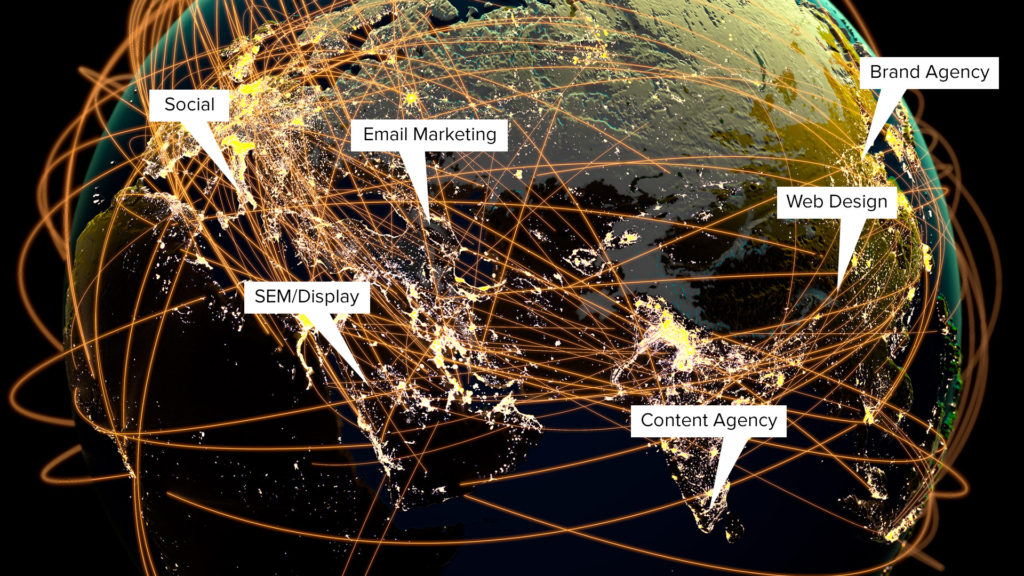Socks. Check. Pants. Check. Underwear. Check. Your bags are packed and you’re off on an adventure, hooray!
You check your flight time, better leave soon. Should you park at the airport? Oops, haven’t booked parking. Better cab it just in case. You call one. Hmm, there’s a bit of a wait. Do I need my hiking shoes? Maybe, you’re not sure. Find them, pack them anyway. Cab’s here… Wait a moment pls! Zip up your bags, run out the door a you should make it to the airport just in the nick of time. As you jog up to the check in desk it’s hard to suppress a sigh of relief as you tuck your sleep-frazzled hair behind your ear and reach into your bag for your passport.
Hmmm.
You must have left it in the other pocket… only you didn’t. It’s not there. In fact, it’s still sitting safely in the drawer at home where it’s no good to anyone. This time it’s impossible to suppress your sigh of despair.
Perhaps you should have planned this a little better.
Plan for your own sanity
Developing a marketing plan is a lot like going on a holiday. You know you’ll it’ll take you somewhere great, but there’s a lot of work to be done before you’re sipping mimosas on the beach.
But success in marketing is not a flight your business can afford to miss.
They say that failing to plan is a plan to fail. So, it comes as no surprise that at some point, every marketer or entrepreneur faces the same important question:
“
How do I create a great marketing plan without it dominating my life for the next three months?
”
It’s okay. Pre-flight jitters aren’t uncommon, especially if you’re new to this, or have had a poor experience in the past. It’s understandable that you might feel a little lost as you try to navigate the confusing world of marketing plans.
After all, there’s so much to do before you can even begin, you’re getting stressed just thinking about it. First, there’s all the questions you need to answer:
- What are the most important steps in marketing planning?
- What’s the best strategy framework?
- How do you target the audience, perform competitive analysis, and define KPIs?
- Which communications plan template should you use?
- How do you craft a great marketing or content plan?
- Where do you even start?!
This is exactly why travellers hire travel agents, and why marketers and entrepreneurs turn to an integrated marketing agency.
At The Walk, marketing plans is our job, and we’ve done it across multiple industries all around the world. Now, we’re thrilled to be able to help you too as you set off on your own marketing plan journey. We’ve even written you the equivalent of a travel guide!
In our free ebook, we’ve summarised years of marketing planning experience into a compact, step-by-step guide, packed with tips, tricks, hacks and examples to help send you on your way.
But why would you want to be the passenger on someone else’s flight when you could be the pilot of your very own plane? That’s the beauty of our marketing plan guide. It doesn’t tell you where to fly your plane, it simply shows you how to fly it. Where you take that knowledge is entirely up to you.
By the time you’ve finished reading our guide, you’ll have the knowledge, skills and direction you need to get soaring higher than you ever thought possible.
Grab our free ebook right here, or keep reading to get a sneak peek at what you’ll find inside.
So buckle up and let’s get going!
1. The pilot: you and your current situation

You can’t know where you’re heading until you know where you are. Ask yourself:
“
Who are you? Where does your business currently stand in the market? How are things going?
”
You’ll want to be able to answer these critical questions to kickstart your marketing planning process, and you’ll achieve that by doing the following:
- Define a crystal-clear unique selling proposition (USP)
- Craft an elevator pitch that puts USP it in the right context
- Conduct a situation analysis with a brutally honest SWOT
The steps above are best done sequentially, and if you follow the advice in our ebook you’ll master them in no time.
The biggest challenge many marketers face is being able to view their business objectively. Surrounded by the everyday challenges of your company, it can be difficult to see the bigger picture. This can lead to a biased viewpoint that can hinder your planning efforts.
Pretend you’ve never heard of your business before. It’s much easier to see the strengths and weaknesses of a company when you view it from an outsider’s perspective.
2. The passenger: a customer you know by name
Every plane has a flight manifest, and the pilot doesn’t take off until they know every single person that’s flying with them, and their baggage.
But unlike flying commercial, savvy marketing is all about relationships. Intimate, honest, human relationships. These customers are real people, not just numbers on a spreadsheet. That’s why you’ll want to craft audience personas: hypothetical people who represent the common traits of the audiences that you’re targeting.
It’s a bit tricky to get personas perfect, but the general idea is to average out traditional segmentation criteria and craft them into lifelike personalities with real interests, goals and aspirations.
Read the ebook to learn the step-by-step process and meet our sample persona: a small-town Aussie family entrepreneur with a very particular opinion on IT…
3. The departure: market and brand positioning

GPS uses latitude and longitude, and your marketing plan needs its own set of coordinates:
- Market positioning and competitive analysis: where do you sit in the market? Where do you want to be? Where are you in relation to your competitors?
- Brand positioning: where do you sit in the minds of consumers? What do your customers think about your brand?
The challenge at this stage is determining how accurate these coordinates need to be. Do you just need the know the city you’re going to, or do you need the full street address? Yes, you have to know where to stop, where you’re the effort outweighs the benefit. In the ebook we’ll show you how to determine how much information you need to collect by considering things such as:
- The optimal number of competitors
- Researching indirect competition (substitutes)
- How to compare USPs and intersections
- Channels to analyse (traffic, sales, outbound etc.)
- How to make a perceptual map that you can actually put into action
The same principle applies to brand positioning: you’ll want an effective, yet simple process. We love using a tried-and-tested formula that we’ve adapted from Amazon’s legendary statement from back in 2001, when they mostly sold books:
“
For World Wide Web users who enjoy books, Amazon.com is a retail bookseller that provides instant access to over 1.1 million books.
Unlike traditional book retailers, Amazon.com provides a combination of extraordinary convenience, low prices, and comprehensive selection.
”
Can you spot the evergreen elements in there? Hint: there are as many as 8, and you can apply them to your positioning statement in minutes. Of course, the answer is in our ebook, right here.
4. The destination: SMART goals, objectives and KPIs
So you know where you are, who’s flying with you, and you’re ready to fly. But where are you actually going?
Every successful business needs to determine their destination and a way of tracking its progress. It’s time to find yours.
This is the stage where we define:
- Goals — Your top-level intentions. These are generally broad aims like ‘increase revenue’ or ‘grow brand visibility’.
- Objectives — These are measurable targets you need to hit to achieve your goals
- KPIs — Your Key Performance Indicators track progress quantitatively
The list is hierarchical, i.e. KPIs measure objectives, which in turn define goals. For all three elements, you’ll want to quantify everything you can accurately:
- Make goals and objectives rigorously S.M.A.R.T. – Specific, Measurable, Achievable, Relevant and Time-bound
- Choose KPIs that work well for your industry and business model, with the optimal mix of sales, marketing and digital KPIs (e.g. sales per rep, CPA, email open rate).
Now you know where you’re heading and how you’ll track your journey, it’s finally time to take flight!
5. The journey: strategy & six-month communication plan
This is the really fun part: the journey itself. This is where we set real change in motion with strategy and tactics.
Because businesses and industries are all so individual, there’s no “right” way to do strategy. But there are ways to start and assess which is the right way for you, and you can learn a lot about that from your buying cycle.
Customers often follow predictable patterns when buying from your brand, and you’ve established what those patterns are, you can build a plan based around them. With a clear understanding of the buying cycle, you can offer the right message, at the right time, through the right channels.
Customers typically go through five stages before making a purchase – awareness, research, comparison, purchase, retention – and in the ebook you’ll find useful guidance on how exactly to tackle each stage.
With the strategy defined and ready, it’s time to plan tactics in your 6-month communication plan, and we can help with a handy content plan template we use for ourselves and our clients.
Grab the template in the ebook today.
Now it’s your turn to take to the skies.

Writing a marketing plan doesn’t have to be so daunting. With the right travel guide, it can be an exciting journey that leads to an even more exciting destination. Plus, you’ll get there quicker.
Whether you’re just getting started with your first marketing plan, or you’re a seasoned marketing pro trying to save time and multiply results, our marketing plan ebook could help.





Be the first to comment on "A guide to the ultimate marketing plan"